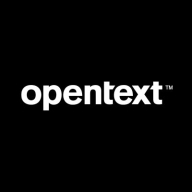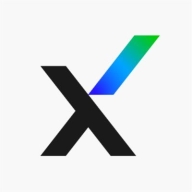

Trellix Endpoint Security Platform and OpenText Core Endpoint Protection compete in the endpoint security category. Users seem more satisfied with Trellix due to its comprehensive suite and central management features, even though its pricing is higher than OpenText Core.
Features: Trellix offers advanced threat prevention, encryption, and seamless management with ePolicy Orchestrator. Its integration with other security solutions enhances enterprise capabilities. OpenText Core is known for its lightweight efficiency and quick deployment, though it lacks some advanced functionalities and prioritizes speed and low resource usage.
Room for Improvement: Trellix needs to enhance complex setup procedures and support response times while reducing system resource consumption. OpenText Core could benefit from improved detailed reporting, enhanced threat response capabilities, and better mobile support.
Ease of Deployment and Customer Service: Trellix supports hybrid environments but faces challenges with complex deployment and needs accelerated response times post-McAfee-FireEye merger. OpenText Core, focused on hybrid and public cloud solutions, excels in seamless deployment and has strong customer support, both receiving high satisfaction ratings.
Pricing and ROI: Trellix's higher pricing is justified by its robust features, providing good ROI with comprehensive protection. OpenText Core is a cost-effective option with affordable pricing, seen as budget-friendly. Trellix offers significant savings in managing and securing large environments, emphasizing comprehensive protection.
| Product | Market Share (%) |
|---|---|
| Trellix Endpoint Security Platform | 3.9% |
| OpenText Core Endpoint Protection | 0.9% |
| Other | 95.2% |


| Company Size | Count |
|---|---|
| Small Business | 35 |
| Midsize Enterprise | 2 |
| Large Enterprise | 2 |
| Company Size | Count |
|---|---|
| Small Business | 67 |
| Midsize Enterprise | 36 |
| Large Enterprise | 59 |
OpenText Core Endpoint Protection offers cloud-managed endpoint security with AI integration, providing real-time protection and lightweight performance. It ensures low system impact, seamless cloud integration, and cost-effective security solutions for various devices.
OpenText Core Endpoint Protection is a comprehensive endpoint security platform utilized by managed-service providers for antivirus and firewall functionality across servers, workstations, and mobile devices. It employs AI for robust threat detection, integrating with cloud applications for real-time updates. Multi-layered security features include malware protection, network defense, and DNS protection. Although connectivity and threat reporting need improvement, this platform extensively supports remote device management and integrates efficiently with Active Directory policies.
What are the key features of OpenText Core Endpoint Protection?OpenText Core Endpoint Protection finds application in industries requiring stringent data protection and peace of mind over device security. Managed-service providers implement this for comprehensive antivirus and firewall features, safeguarding multi-device networks. It is particularly useful for DNS protection and integrating with Active Directory policies, enabling secure yet flexible operations across sectors.
Trellix Endpoint Security Platform offers essential features like centralized management, threat prevention, and encryption, facilitating seamless scaling and integration with other systems while prioritizing user security.
This comprehensive platform focuses on endpoint protection, antivirus capabilities, and malware defense. It enhances cybersecurity with data loss prevention, advanced threat detection, and AI-driven features for reliable protection without impacting performance. Central management and advanced reporting streamline integration and ease of use. Flexible policy deployment through the management console and its robust security measures, such as DLP and device control, further increase protection. Challenges include high CPU and memory usage affecting performance, a complex interface, and lengthy deployment. Third-party integration and Windows Hello support need improvement. Additional concerns involve improved threat detection and faster technical support responses.
What are the key features of Trellix Endpoint Security Platform?Trellix Endpoint Security Platform is widely implemented in industries such as banking and government for securing mobile and desktop devices. Its capabilities cover network security, device control, and remote access protection, catering to diverse environments by offering robust cybersecurity management against advanced threats.
We monitor all Endpoint Protection Platform (EPP) reviews to prevent fraudulent reviews and keep review quality high. We do not post reviews by company employees or direct competitors. We validate each review for authenticity via cross-reference with LinkedIn, and personal follow-up with the reviewer when necessary.